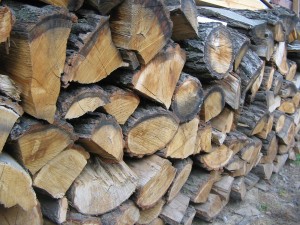The essential ingredient to a successful fire, the right firewood can provide you with convenient, effective, and safe heat all winter long. Many homeowners with a fireplace know very little about choosing and storing firewood correctly. Our customers at The Mad Hatter often ask our advice on the best type of firewood for burning. We would like to share with you our tips on which firewood you should buy, as well as how you should best store your wood.
What species of firewood should I buy?
While certain species of wood like elm, hickory, and oak are known to be the longest-burning because of their density, the Chimney Safety Institute of America (CSIA) claims the most important aspect of the best firewood is that it is seasoned. Seasoned firewood has less water content than freshly cut wood, which makes it easier to start. It also burns cleaner and produces more heat. Remember that the higher the moisture content in the wood, the harder it is to burn.
Are there dangers to using unseasoned firewood?
Actually, yes, burning “green” wood can lead to smoke issues, odor problems, and most dangerously, large build-up of creosote deposits on your chimney walls. A highly combustible compound, creosote is one of the leading causes of chimney fires in this country. These dangers occur because the fire spends so much energy burning off the water and results in cooler smoke exiting the chimney. This cooler smoke creates the perfect atmosphere for the rapid development of creosote.
Can I season firewood myself?
If your wood is cut six months to a year in advance and properly stored, the sun and wind will dry out and season the wood for you.
How should I properly store firewood?
The ideal storage space for firewood is a covered wood shed with open sides to allow air circulation for drying. However, if you do not have a wood shed, stack the wood off the ground in a sunny area. Be sure to cover your wood on rainy or snowy days to keep it from getting wet, but remove the cover after the rain or snow to keep air circulating. Keeping your wood covered all of the time can also trap moisture underneath the pile. The CSIA also recommends you split the wood as well as cut it to shorter lengths to promote drying.
How can I be sure the firewood is seasoned enough to use?
Seasoned wood is lightweight, and if you bang two pieces of dried wood together, it will make a hollow sound. The color of the wood is another sign; dried wood tends darken to a gray or yellow shade. Unseasoned wood will be very heavy, and its ends will look much fresher than the ends of dried wood. Banging together two pieces of wet wood creates a dull, thudding sound.
If you have more questions about choosing the right kind of firewood, contact The Mad Hatter to ask our expert staff. Let our experience guide you to burning the best wood you can.

